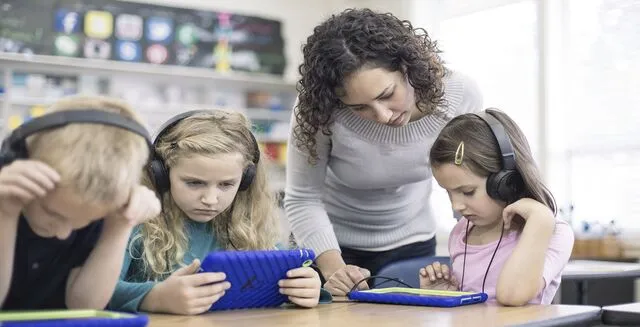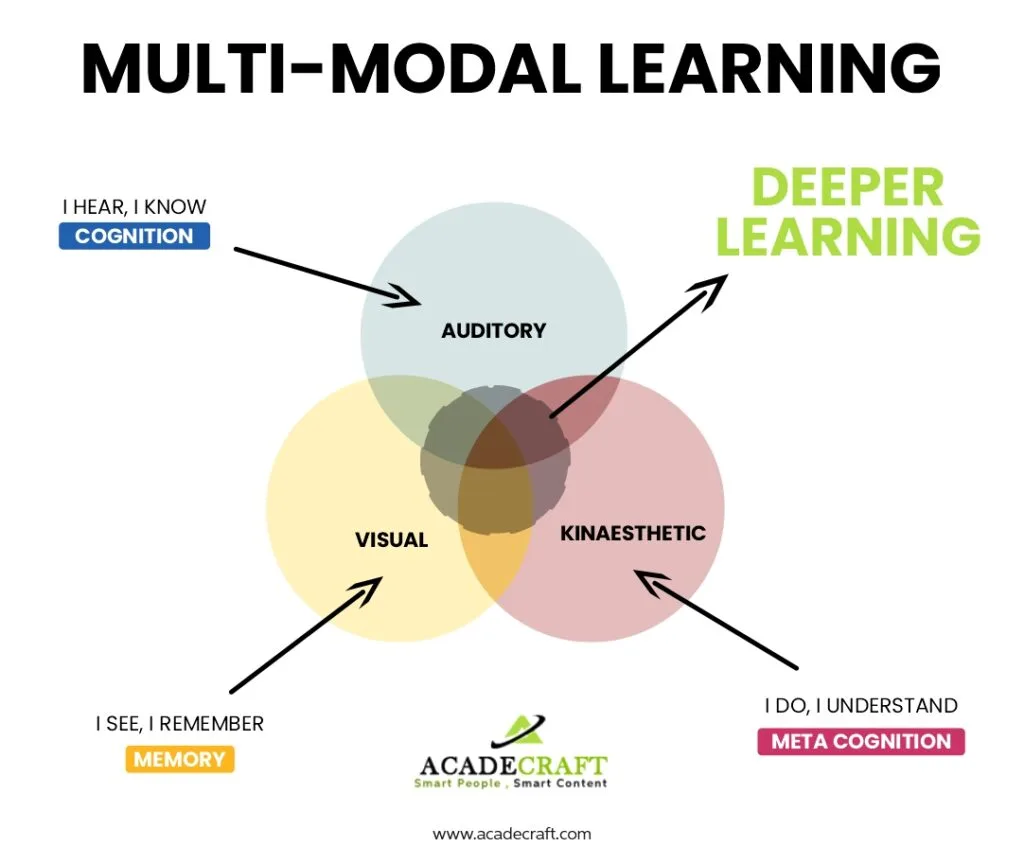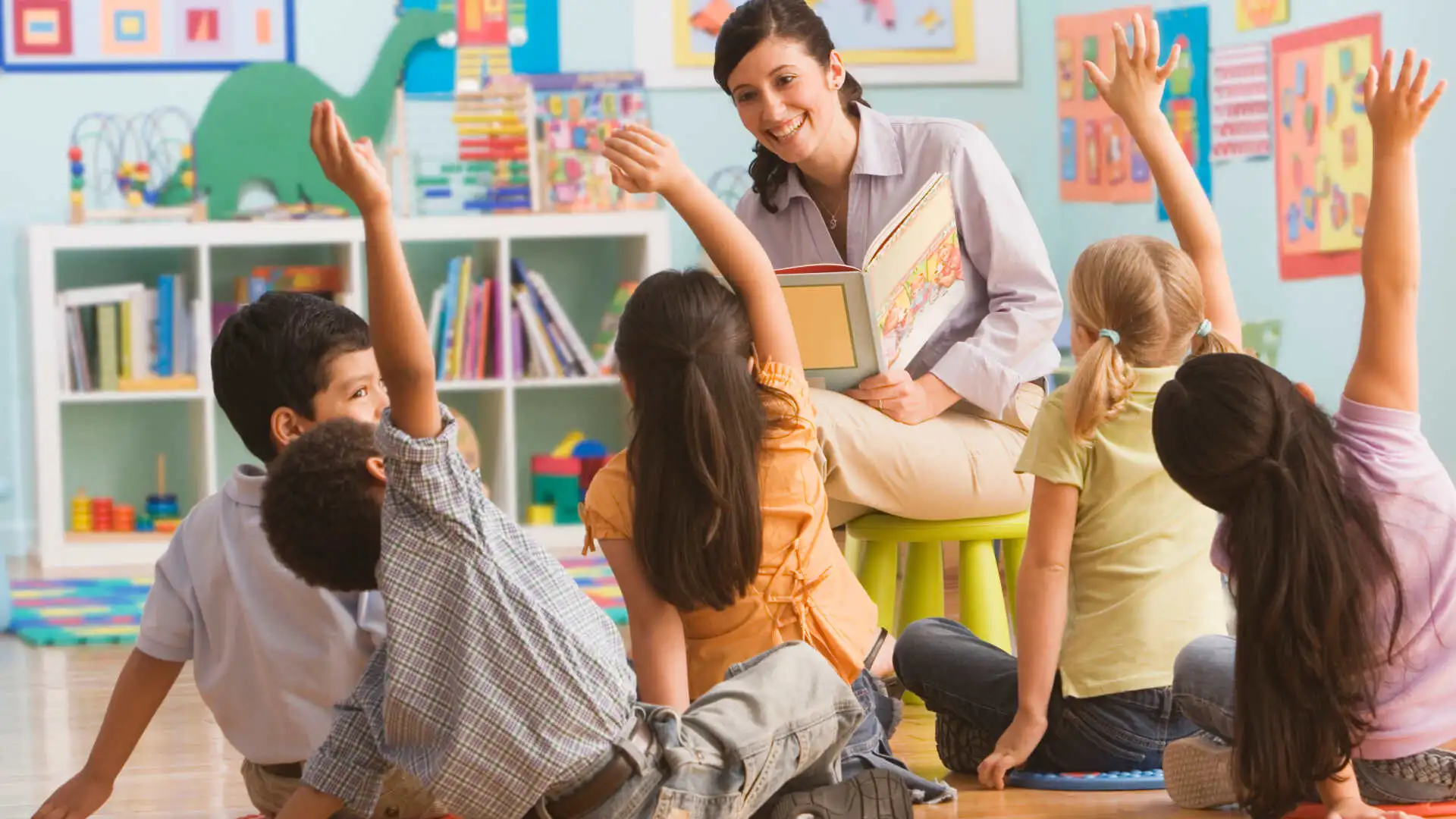
Effective teaching in the varied educational environment of today necessitates adjusting to different learning styles to guarantee that every student has the chance to achieve. One strategy that has attracted a lot of interest is multimodal learning. Is multimodal learning, though? This blog post will describe multimodal learning, go over its significance, offer implementation tactics, and offer helpful hints and examples for setting up a multimodal learning environment.
Multimodal Learning Definition
A teaching strategy known as "multimodal learning" combines several teaching modalities to accommodate students' varying learning styles and skills. Combinations of visual, aural, reading/writing, and kinesthetic (hands-on) learning modalities can be included in this. Multimodal learning seeks to improve information comprehension, retention, and application by utilizing a variety of senses.
Importance of Multimodal Learning
Educators need to comprehend multimodal learning and why it matters. The following justifies the significance of multimodal learning:

Cater to Diverse Learning Styles: Students' methods of information processing are distinct. Education becomes more inclusive when teaching strategies are aligned with diverse learning preferences, which is ensured by multimodal learning.
Enhance Engagement: A more dynamic learning environment is created and monotony is decreased when several teaching modalities are used to keep students interested and engaged.
Improve Retention: Using a variety of senses and learning methods can help students retain and comprehend the information more fully.
Encourage Critical Thinking: Students who are exposed to a variety of learning environments are more likely to think critically and approach challenges from multiple perspectives.
Foster Collaboration: Group work is a common component of multimodal activities, which helps pupils develop their communication and cooperation abilities.
Multimodal Learning Strategies
To meet the varying needs of students, multimodal learning implementation entails merging several instructional styles. Here are a few useful tactics:

Use Visual Aids: Use infographics, movies, diagrams, and charts to graphically communicate concepts.
Incorporate Audio: To accommodate auditory learners, use music, podcasts, and lectures that have been taped.
Engage Kinesthetic Learners: Arrange experiments, role-playing games, and practical activities to support students' learning via doing.
Reading and Writing: To help reading and writing learners, give them reading resources, promote taking notes, and give them written assignments.
Technology Integration: To develop a rich, multimodal learning environment, and make use of interactive technologies, instructional software, and internet resources.
5 Guidelines for Creating a Multimodal Learning Environment
Careful thought and preparation go into developing a successful multimodal learning environment. The following five recommendations will assist teachers in creating a classroom that facilitates multimodal learning:

Assess Learning Styles: Begin by assessing the learning styles of your students. Use surveys or assessments to understand their preferences and strengths.
Plan Diverse Activities: Create classes that take into account different learning styles. Make sure that every instruction incorporates tactile, reading/writing, aural, and visual components.
Use Technology Wisely: Use technology to improve instruction without burdening pupils. Multimodal learning can be supported by resources such as Internet resources, instructional apps, and interactive whiteboards.
Encourage Collaboration: Encourage group projects that call for collaboration and mutual learning among the students. Students are exposed to a variety of learning modalities and a sense of community is fostered as a result.
Provide Feedback: Regarding multimodal actions, provide constructive criticism. Emphasize how many learning modalities enhance comprehensive comprehension and motivate learners to experiment with alternative strategies.
5 Examples of Multimodal Learning Activities for the Classroom
Here are five activities that can be used in the classroom to demonstrate how multimodal learning can be applied in practice:

1. Interactive Storytelling
Utilizing props, drawings, and digital tools, students can create and deliver stories that integrate visual, aural, and tactile elements. This exercise stimulates the senses and fosters creativity.
Example: Students can record their narration, utilize storyboards to outline their stories, and use costumes and props to act out important events.
2. Science Experiments
Hands-on experiments accommodate kinesthetic learners by combining visual and audio components. Students can watch, note, and talk about what they discover.
Example: Students should participate in a basic chemical experiment where they will mix materials and see reactions. They can make diagrams to illustrate their findings and use movies to record the procedure.
3. Group Debates
Arrange discussions on a range of subjects that let students conduct research (writing and reading), provide an oral presentation of their positions, and cite examples from the text to bolster their claims.
Example: Assign each group in the class a position on a hot-button subject. Pupils can support their ideas using slides, posters, and data.
4. Multimedia Projects
Assign assignments that need students to investigate a topic using a variety of media, including podcasts, written reports, and videos.
Example: Students can write an essay, record a documentary-style film, and present their research to the class as part of a history project.
5. Physical Activities with Learning Objectives
Include physical movement in your classes by utilizing it to teach mathematical concepts or to role-play historical events.
Example: In a kinesthetic activity, students can make various shapes and angles using their bodies to teach geometry.
Conclusion
Through the incorporation of several learning styles, multimodal learning is a potent method that addresses the unique needs of students. Through comprehension of multimodal learning and the application of useful tactics, instructors can establish stimulating, diverse, and productive learning environments.
Are you prepared to change the way that you teach? Assessing your student's learning preferences and using multimodal tactics in your classes should be your first steps. Visit Our E-Class Blog and become a part of our community of committed educators for additional advice and information on successful teaching techniques.